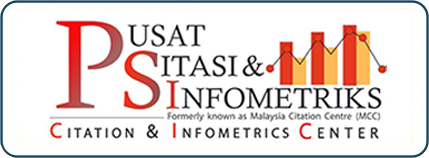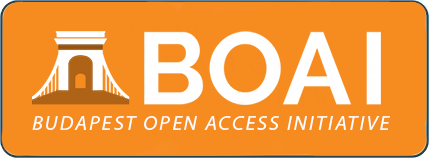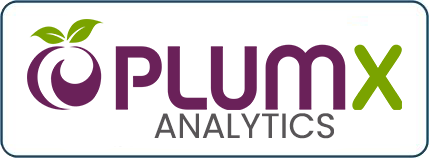Factors Influencing the Audit Quality of the Municipalities
Perceptions of Accountants and Internal Auditors
DOI:
https://doi.org/10.33102/jmifr.531Keywords:
Independence, Competence, Audit fees, Audit firm sizes, Accounting basis, Internal auditingAbstract
The study aims to analyze the Audit Quality (AQ) factors that were perceived to be necessary by the accountants and internal auditors in municipalities of Palestine. A survey of 309 accountants and internal auditors from 155 Palestinian municipalities was conducted. The questionnaire data was statistically analyzed using Smart PLS3 software. The study discovered that auditor ethics, independence, and competence were the most significant elements in determining AQ. Meanwhile, Internal Auditing (IA), Accounting Basis (AB), and the Laws and Regulations (LR) have a moderate effect. However, the least crucial factors were Audit Fees (AF) and Audit Firm Size (AFS). The study is limited by the survey questionnaire method’s general limitations and the perceptions of accountants and internal auditors. It offers evidence on AQ from Palestine, helps the audit firms distinguish their marketing and service delivery strategies, and understands the AQ aspects sought by those clients. Moreover, the study provides the municipal councils and the regulators of the municipalities with greater knowledge on how to select the best auditors and maintain internal control measures, notably IA and the use of the accrual basis in accounting procedures. Since the findings are generally consistent with previous studies, more emphasis can be placed on the effectiveness of municipal internal control.
Downloads
References
Abbott, L. J., Daugherty, B., Parker, S., & Peters, G. F. (2016). Internal Audit Quality and Financial Reporting Quality: The Joint Importance of Independence and Competence. Journal of Accounting Research, 54(1), 3–40. https://doi.org/10.1111/1475-679X.12099
Ademola, A. O., Ben-Caleb, E., Madugba, J. U., Adegboyegun, A. E., & Eluyela, D. F. (2019). International public sector accounting standards (IPSAS) adoption and implementation in Nigerian public sector. International Journal of Financial Research, 11(1), 434. https://doi.org/10.5430/ijfr.v11n1p434
Aikins, S. K. (2011). An examination of government internal audits’ role in improving financial performance. Public Finance and Management, 11(4), 306. https://ssrn.com/abstract=2689405
Al-Dhubaibi, A. A. S. (2020). Auditors’ responsibility for fraud detection: Views of auditors, preparers, and users of financial statements in Saudi Arabia. Accounting, 6(2020), 279–290. https://doi.org/10.5267/j.ac.2020.2.007
Alareeni, B. A. (2019). The associations between audit firm attributes and audit quality-specific indicators: A meta-analysis. Managerial Auditing Journal, 34(1), 6–43. https://doi.org/10.1108/MAJ-05-2017-1559
AlBeksh, H. M. (2016). Compliance of auditors to ethics and rules of professional conduct and its impact on audit quality. Imperial Journal of Interdisciplinary Research, 1(12), 610-621.
Ali, S., & Aulia, M. R. P. (2015). Audit firm size, auditor industry specialization and audit quality: an empirical study of Indonesian state-owned enterprises. Research Journal of Finance and Accounting, 6(22), 1–14. https://www.iiste.org/Journals/index.php/RJFA/article/view/26912/27595
Allen, A., & Woodland, A. (2010). Education requirements, audit fees, and audit quality. Auditing: A Journal of Practice & Theory, 29(2), 1–25. https://doi.org/10.2308/aud.2010.29.2.1
Arens, A. A., Elder, R. J., Beasley, M. S., & Hogan, C. E. (2017). Auditing and assurance services (16th ed.). Pearson.
Asare, T. (2009). Internal auditing in the public sector: Promoting good governance and performance improvement. International Journal on Governmental Financial Management, 9(1), 15–28.
Ashfaq, K., Riaz, A., & Ilyas, S. (2023). Non-audit services and audit quality: moderating role of audit partner attributes. Contemporary Issues in Social Sciences and Management Practices, 2(1), 1–10. https://doi.org/10.61503/cissmp.v2i1.26
Avis, E., Ferraz, C., & Finan, F. (2018). Do government audits reduce corruption? Estimating the impacts of exposing corrupt politicians. Journal of Political Economy, 126(5), 1912–1964. https://doi.org/10.1086/699209
Bagozzi, R. P., & Yi, Y. (1988). On the evaluation of structural equation models. Journal of the Academy of Marketing Science, 16(1), 74–94. https://doi.org/10.1007/BF02723327
Ball, F., Tyler, J., & Wells, P. (2015). Is audit quality impacted by auditor relationships? Journal of Contemporary Accounting and Economics, 11(2), 166–181. https://doi.org/10.1016/j.jcae.2015.05.002
Barr-Pulliam, D., Eulerich, M., & Ratzinger-Sakel, N. (2024). The effect of the internal audit function’s perceived assurance versus advisory purpose on the external auditor’s reliance decision. Managerial Auditing Journal, 39(2), 138-165. https://doi.org/DOI:10.1108/MAJ-08-2023-4021
Beattie, V., Fearnley, S., & Hines, T. (2012). Perceptions of factors affecting audit quality in the post-SOX UK regulatory environment. Accounting and Business Research, 43(1), 56-81. https://doi.org/10.1080/00014788.2012.703079
Behn, B. K., Carcello, J. V., Hermanson, D. R., & Hermanson, R. H. (1997). The determinants of audit client satisfaction among clients of Big 6 firms. Accounting Horizons, 11(1), 7–24. https://doi.org/10.1111/j.1911-3846.1999.tb00597.x
Besley, T., & Ghatak, M. (2017). Public–private partnerships for the provision of public goods: Theory and an application to NGOs. Research in Economics, 71(2), 356–371. https://doi.org/10.1016/j.rie.2017.04.005
Blay, A. D., Gooden, E. S., Mellon, M. J., & Stevens, D. E. (2019). Can Social Norm Activation Improve Audit Quality? Evidence from an Experimental Audit Market. Journal of Business Ethics, 156(2), 513–530. https://doi.org/10.1007/s10551-017-3561-z
Bojkovska, K., Dimitrova, J., & Janceva, A. (2019). The functioning of the State Audit in the Republic of North Macedonia and the Republic of Montenegro. Journal of Economics, 4(2). https://js.ugd.edu.mk/index.php/JE/article/view/3158/2870
Boon, K., McKinnon, J., & Ross, P. (2008). Audit service quality in compulsory audit tendering Preparer perceptions and satisfaction. Accounting Research Journal, 21(2), 93–122. https://doi.org/10.1108/10309610810905917
Bouhawia, M. S., Irianto, G., & Baridwan, Z. (2015). The Effect of Working Experience, Integrity, Competence, and Organizational Commitment on Audit Quality (Survey State Owned Companies in Libya). Journal of Economics and Finance, 6(4), 60–67. https://www.iosrjournals.org/iosr-jef/papers/Vol6-Issue4/Version-2/G06426067.pdf
Butcher, K., Harrison, G., & Ross, P. (2013). Perceptions of Audit Service Quality and Auditor Retention. International Journal of Auditing, 17(1), 54–74. https://doi.org/10.1111/j.1099-1123.2012.00457.x
Carcello, J. V., Hermanson, R. H. & McGrath, N. T. (1992). Audit quality attributes: The perceptions of audit partners, preparers, and financial statement users. Auditing, 11(1), 1–15.
Chadegani, A. A. (2011). Review of studies on audit quality in Asia. NTU Management Review, 27(1), 312–317. https://doi.org/10.6226/NTUMR.2016.AUG.25104-004
Chalmers, K., Hay, D., & Khlif, H. (2019). Internal control in accounting research: A review. Journal of Accounting Literature, 42, 80–103. https://doi.org/10.1016/j.acclit.2018.03.002
Chang, K. C., Leung, C. C. and Yew, W. W. (2007). Standard anti-tuberculosis treatment and hepatotoxicity: do dosing schedules matter? European Respiratory Society, 29, 347–351. https://erj.ersjournals.com/content/29/2/347
Chin, W. W. (1998). The partial least squares approach to structural equation modellin. Modern Methods for Business Research, 295(2), 295–336.
Chin, W. W. (2010). How to write up and report PLS analyses Handbook of partial least squares: Springer.
Coffman, D. L., & Maccallum, R. C. (2005). Using parcels to convert path analysis models into latent variable models. Multivariate Behavioral Research, 40(2), 235–259. https://psycnet.apa.org/doi/10.1207/s15327906mbr4002_4
Cohen, S., Leventis, S., & Cohen, S., & Leventis, S. (2013). Effects of municipal, auditing and political factors on audit delay. Accounting Forum, 37(1), 40–53. https://doi.org/10.1016/j.accfor.2012.04.002
Copley, P. A. (1991). The association between municipal disclosure practices and audit quality. Journal of Accounting and Public Policy, 10(4), 245–266. https://doi.org/10.1016/0278-4254(91)90001-Z
Cuadrado-Ballesteros, B., Cito, F., & Bisogno, M. (2019). The role of public-sector accounting in controlling corruption: an assessment of Organisation for Economic Co-operation and Development countries. International Review of Administrative Sciences, 0(0), 1–20. https://doi.org/10.1177/0020852318819756
DeFond, M. L., & Zhang, J. (2014). A review of archival auditing research. Journal of Accounting and Economics, 58(2–3), 275–326. https://doi.org/10.1016/j.jacceco.2014.09.002
Dewi, N. F., Ferdous Azam, S. M., & Mohd Yusoff, K. M. (2019). Factors influencing the information quality of local government financial statement and financial accountability. Management Science Letters, 9(9), 1373–1384. https://doi.org/10.5267/j.msl.2019.5.013
Dickins, D., Johnson-Snyder, A. J., & Reisch, J. T. (2018). Selecting an auditor for Bradco using indicators of audit quality. Journal of Accounting Education, 45(2018), 32–44. https://doi.org/10.1016/j.jaccedu.2018.07.001
Dimitrova, J., & Paneva, N. (2019). Internal audit in the public sector in Republic of Macedonia. Journal of Economics, 35, 52–59. https://js.ugd.edu.mk/index.php/JE/article/view/2738
Elder, R. J., Lowensohn, S., & Reck, J. L. (2015). Audit firm rotation, auditor specialization, and audit quality in the municipal audit context. Journal of Governmental & Nonprofit Accounting, 4(1), 73–100. https://doi.org/10.2308/ogna-51188
Eulner, V., & Waldbauer, G. (2018). New development: Cash versus accrual accounting for the public sector—EPSAS. Public Money and Management, 0962, 1–4. https://doi.org/10.1080/09540962.2018.1444560
Fornell, C. and Larcker, D. F. (1981). Evaluating structural equation models with unobservable variables and measurement error. Journal of Marketing Research, 18(1), 39–50. https://doi.org/10.2307/3151312
Francis, J. (2011). A framework for understanding and researching audit quality. Auditing : A Journal of Practice & Theory, 30, 125–152. https://doi.org/10.2308/ajpt-50006
Francis, J. R. (2004). What do we know about audit quality? British Accounting Review, 36(4), 345–368. https://doi.org/10.1016/j.bar.2004.09.003
Ghebremichael, A. A. (2018). Determinants of audit service quality perceptions of supervisory directors in Dutch corporations. Contemporary Management Research, 14(1), 53–84. https://doi.org/10.7903/cmr.18037
Goodwin, J. (2004). A comparison of internal audit in the private and public sectors. Managerial Auditing Journal, 19(5), 640–650. https://doi.org/10.1108/02686900410537766
Greenwood, M., & Zhan, R. (2019). Audit Adjustments and Public Sector Audit Quality. Abacus, 55(3), 511–534. https://doi.org/10.1111/abac.12165
Haeridistia, N., & Fadjarenie, A. (2019). The effect of independence, professional ethics & auditor experience on audit quality. International Journal of Scientific and Technology Research, 8, 24–27.
Hair, E., Halle, T., Terry-Humen, E., Lavelle, B., & Calkins, J. (2006). Children’s school readiness in the ECLS-K: Predictions to academic, health, and social outcomes in first grade. Early Childhood Research Quarterly, 21(4), 431–454. https://psycnet.apa.org/doi/10.1016/j.ecresq.2006.09.005
Hair, J.F., Sarstedt, M., Hopkins, L. and Kuppelwieser, V. G. (2014). Partial least squares structural equation modeling (PLS-SEM): An emerging tool in business research. European Business Review, 26(2), 106–121. https://doi.org/10.1108/EBR-10-2013-0128
Hair, J. F., Ringle, C. M., & Sarstedt, M. (2011). PLS-SEM: Indeed a silver bullet. Journal of Marketing Theory and Practice, 19(2), 139–152. https://doi.org/10.2753/MTP1069-6679190202
Hair Jr., J. F., Matthews, L. M., Matthews, R. L., & Sarstedt, M. (2017). PLS-SEM or CB-SEM: updated guidelines on which method to use. International Journal of Multivariate Data Analysis, 1(2), 107. https://doi.org/10.1504/ijmda.2017.10008574
Hardies, K., Breesch, D., & Branson, J. (2015). The female audit fee premium. Auditing: A Journal of Practice & Theory, 34(4), 171–195. https://doi.org/10.2308/ajpt-51079
Harris, E. E., Tate, S. L., & Zimmerman, A. B. (2019). Does hiring a local industry specialist auditor matter to nonprofit organizations? Nonprofit and Voluntary Sector Quarterly, 48(3), 633–664. https://doi.org/10.1177/0899764018784752
Hassan, Y. M. (2016). Determinants of audit report lag: evidence from Palestine. Journal of Accounting in Emerging Economies, 6(1), 13–32. https://doi.org/10.1108/jaee-05-2013-0024
Hay, D., & Cordery, C. (2018). The value of public sector audit: Literature and history. Journal of Accounting Literature, 40(1), 1–15. https://doi.org/10.1016/j.acclit.2017.11.001
Henseler, J., Ringle, C. M., & Sarstedt, M. (2015). A New Criterion for Assessing Discriminant Validity in Variance-based Structural Equation Modeling. Journal of the Academy of Marketing Science, 43(1), 115–135. https://doi.org/10.1007/s11747-014-0403-8
Ho, R. (2006). Handbook of Univariate and Multivariate Data Analysis and Interpretation with SPSS (1st ed.). Chapman and Hall/CRC. https://doi.org/10.1201/9781420011111
Hussein, F. E., & Hanefah, M. M. (2013). Overview of Surrogates to Measure Audit Quality. International Journal of Business and Management, 8(17), 84–91. https://doi.org/10.5539/ijbm.v8n17p84
Interntional Federation of Accountants (IFAC). (2018). International Code of Ethics for Professional Accountants. https://www.ethicsboard.org/iesba-code
Interntional Federation of Accountants (IFAC). (2012). Public sector financial management transparency and accountability: The use of international public sector accounting standards. https://www.ifac.org/knowledge-gateway/contributing-global-economy/publications/public-sector-financial-management-transparency-and-accountability-use-international-public-sector
Ismail, A. H., Muhammad Merejok, N., Mat Dangi, M. R., & Saad, S. (2019). Does audit quality matters in Malaysian public sector auditing? International Journal of Financial Research, 7(1), 102–116. https://doi.org/10.5430/ijfr.v10n3p203
Kline, R. B. (2005). Principles and practice of structural equation modeling (2nd ed.). The Guilford Press.
Kusumawati, A., & Syamsuddin, S. (2018). The effect of auditor quality to professional skepticsm and its relationship to audit quality. International Journal of Law and Management, 60(4), 998–1008. https://doi.org/10.1108/IJLMA-03-2017-0062
Lai, T. T. T., & Pham, D. H. (2020). The quality of audit services: An assessment from FDI clients in Vietnam. Accounting, 6(6), 1071–1076. https://doi.org/10.5267/j.ac.2020.7.012
Lowensohn, S., Johnson, L. E., Elder, R. J., & Davies, S. P. (2007). Auditor specialization, perceived audit quality, and audit fees in the local government audit market. Journal of Accounting and Public Policy, 26(6), 705–732. https://doi.org/10.1016/j.jaccpubpol.2007.10.004
Mazlan, M. F., & Shahimi, S. (2022). The Influence of religious obligation and zakat literacy on the behavioral intention top pay zakat savings directly through Islamic banking. . The Journal of Muamalat and Islamic Finance Research, 19(2), 136–154. https://doi.org/10.33102/jmifr.v19i2.468
McLelland, A. J., & Giroux, G. (2000). An empirical analysis of auditor report timing by large municipalities. Journal of Accounting and Public Policy, 19(3), 263–281. https://doi.org/10.1016/S0278-4254(00)00011-9
MOLG. (2020). Annual Performance Report 2020. https://www.molg.pna.ps/ar/categories/6/#
Nunnally, J. C., & Bernstein, I. H. (1994). Psychometric theory (3rd ed.). McGraw-Hill.
Octavia, E., & Widodo, N. R. (2015). The effect of competence and independence of auditors on the audit quality. Research Journal of Finance and Accounting, 6(3), 189–194.
Olsson, U. H., Foss, T., Troye, S. V., & Howell, R. D. (2000). The performance of ML, GLS, and WLS estimation in structural equation modeling under conditions of misspecification and nonnormality. Structural Equation Modeling, 7(4), 557–595. https://doi.org/10.1207/S15328007SEM0704_3
Oppenheim, A. N. (1966). Questionnaire Design and Attitude Measurement. Heineman. Ouda.
Pandit, G. M. (1999). Clients’ perceptions of their incumbent auditors and their loyalty to the audit firms: An empirical study. The Mid-Atlantic Journal of Business, 35(4), 171.
Parsimin, F. A., Haron, H., Jamil, N. N., & Ramli, N. M. (2023). Accounting Ethics Education on Ethical Behaviour of Accounting Graduates in Malaysia. The Journal of Muamalat and Islamic Finance Research, 20(1), 54–72. https://doi.org/10.33102/jmifr.503
Pilcher, R., Gilchrist, D., Singh, H., & Singh, I. (2013). The interface between internal and external audit in the Australian public sector. Australian Accounting Review, 23(4), 330–340. https://doi.org/10.1111/auar.12032
Rezaee, Z., Abernathy, J., Causholli, M., Michas, P. N., Roush, P. B., Rowe, S., & Velury, U. K. (2016). Comments of the auditing standards committee of the auditing section of the american accounting association on PCAOB concept release on audit quality indicators, no. 2015-005, July 1, 2015. Current Issues in Auditing, 10(1), C11–C27. https://doi.org/10.2308/ciia-51316
Knechel, R. W., Krishnan, G. V., Pevzner, M., Shefchik, L. B., & Velury, U. K. (2013). Audit quality: Insights from the academic literature. Auditing: A Journal of Practice & Theory, 32(Supp.1), 385–421. https://doi.org/10.2308/ajpt-50350
Rustum, S. R. N. (2018). Quantifiable model for assessing Gaza municipalities’ development projects towards MDLF quality requirement. (Master’s theses Theses and Dissertations Master). Islamic University, Palestine (Gaza Strip). https://search.emarefa.net/detail/BIM-904789
Saeed, A., Zafar, M. W., Manita, R., & Zahid, N. (2024). The role of audit quality in waste management behavior. International Review of Economics and Finance, 89(February 2023), 1203–1216. https://doi.org/10.1016/j.iref.2023.08.019
Sari, R. P., Hastuti, S., & Tannar, O. (2019). Audit Quality Based on Internal Audit Capability Model (IACM) and Gender as Mediating Variabel in the Public Sector. Journal of Economics, Business, and Government Challenges, 2(1), 22–38. https://ebgc.upnjatim.ac.id/index.php/ebgc/article/view/294
Sarstedt, M., Hair, J. F., Ringle, C. M., Thiele, K. O., & Gudergan, S. P. (2016). Estimation issues with PLS and CBSEM: Where the bias lies! Journal of Business Research, 69(10), 3998–4010. https://doi.org/10.1016/j.jbusres.2016.06.007
Sawalqa, F. Al. (2014). External audit services quality and client satisfaction: Evidence from Jordan. Research Journal of Finance and Accounting, 5(12), 223–236. https://www.iiste.org/Journals/index.php/RJFA/article/view/13599#google_vignette
Setyaningrum, D., Siswantoro, D., & Darmastuti, D. (2020). Factors affecting the usefulness of governments’ financial statements in Indonesia. International Journal of Innovation, Creativity and Change, 12(4), 117–134. https://www.ijicc.net/images/vol12/iss4/12415_Setyaningrum_2020_E_R.pdf
Iskandar, T. M., Rahmat, M. M., & Ismail, H. (2010). The relationship between audit client satisfaction and audit quality attributes: Case of Malaysian listed companies. International Journal of Economics and Management, 4(1), 155–180. http://www.ijem.upm.edu.my/vol4no1/bab09.pdf
UNDP. (2009). Update of Diagnostic Report for the Local Governance System in the Occupied Palestinian territory (Issue June). https://www.molg.pna.ps/uploads/userfiles/file/pdfs/DiagnosticReportonLocalGovernanceintheoPt_2009.pdf
Watson, H. (2019). A grounded theory of reconstructing public sector audit [Unpublished doctoral thesis]. Northumbria University. https://nrl.northumbria.ac.uk/id/eprint/42054/1/watson.helen_prof.doc.pdf
Wu, B., Li, A., & Zhang, W. (2024). Clients’ strategic change and auditor behavior: Evidence from audit adjustments and audit fees. Advances in Accounting, 64, 100721. https://doi.org/10.1016/j.adiac.2023.100721
Yamamoto, K., & Kim, M. J. (2019). Stakeholders’ approach on government auditing in the supreme audit institutions of Japan and Korea. Financial Acc & Man, 35(3), 217–232. https://doi.org/10.1111/faam.12187
Yebba, A. A., & Elder, R. J. (2019). The Effects of State-Level GAAP Regulation on Municipal Audit Markets, Reporting Quality, and Audit Fees. Journal of Governmental & Nonprofit Accounting, 8(1), 36–74. https://doi.org/10.2308/ogna-52541
Yuniarti, R. (2011). Audit Firm Size, Audit Fee and Audit Quality. Journal Of Global Management, 2(1), 84-97.
Downloads
Published
How to Cite
Issue
Section
License
Copyright (c) 2024 Husni Rabaiah

This work is licensed under a Creative Commons Attribution 4.0 International License.















